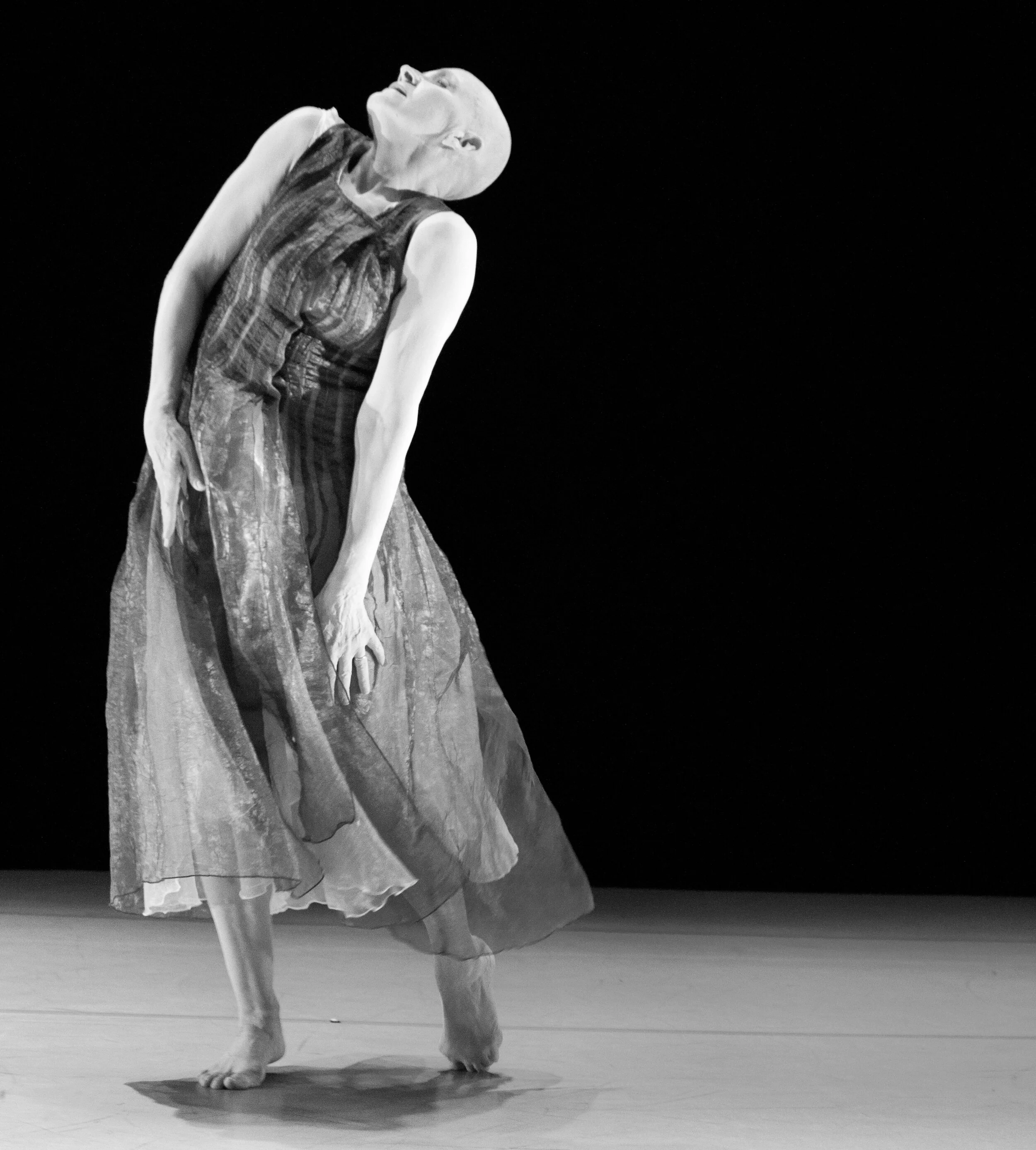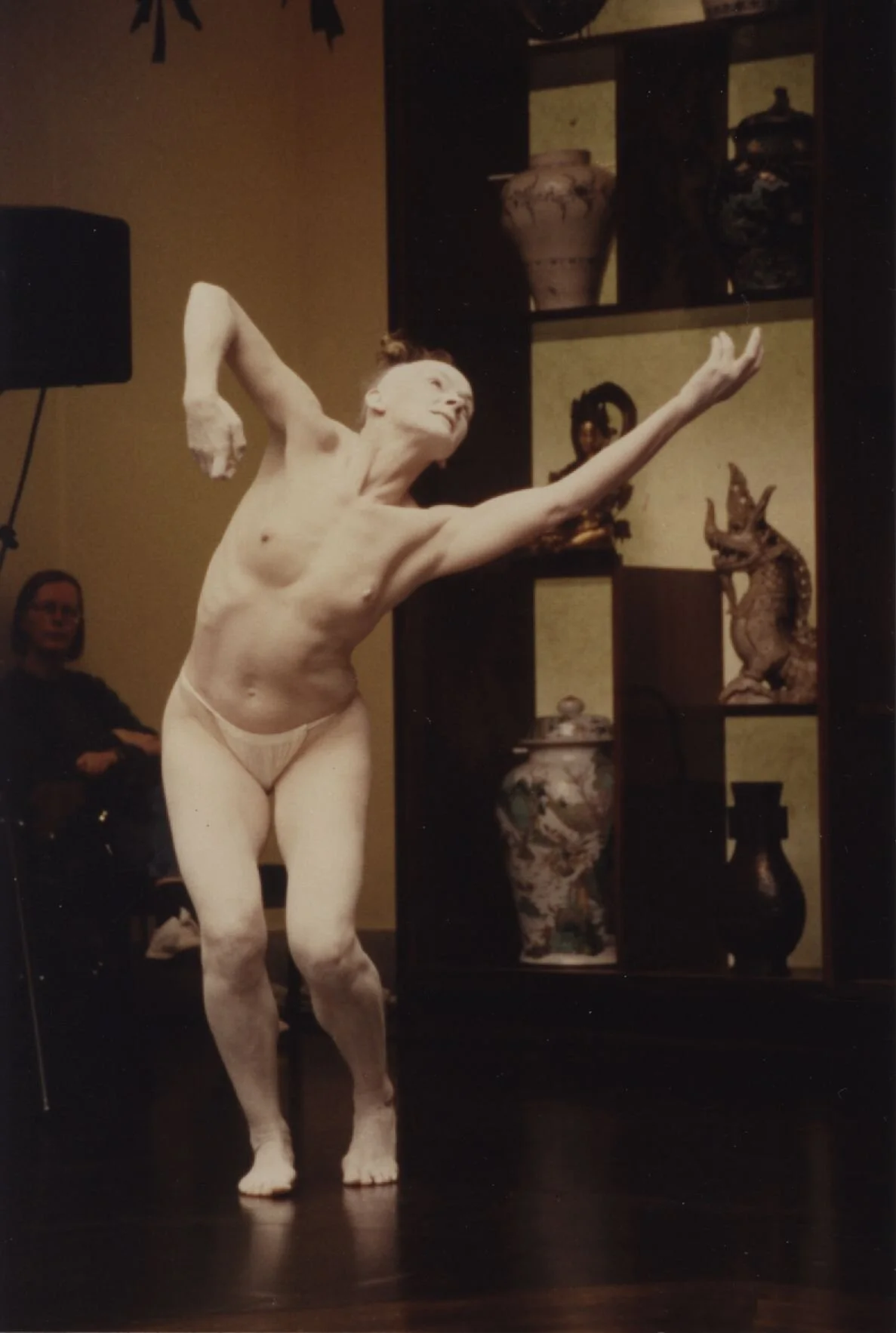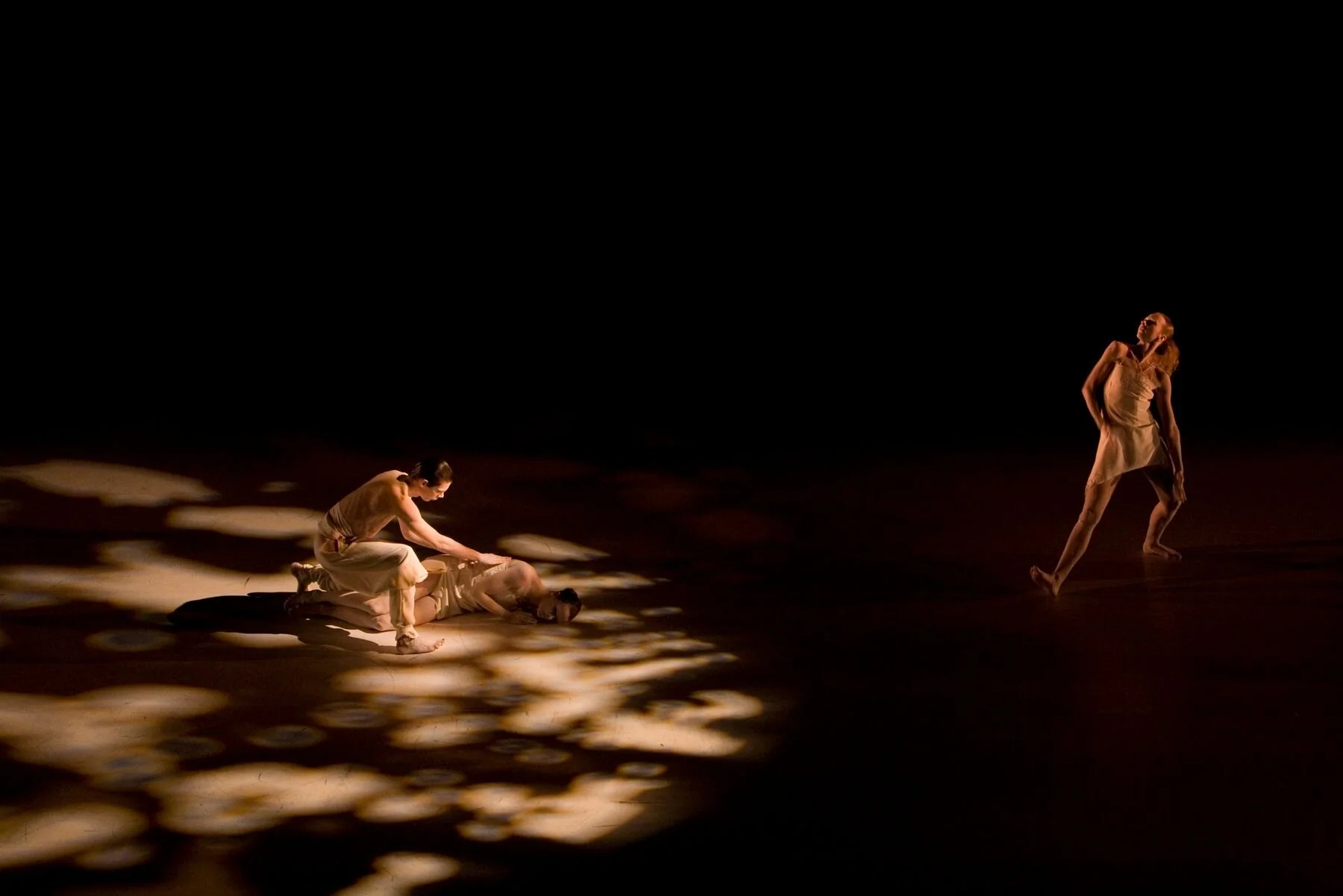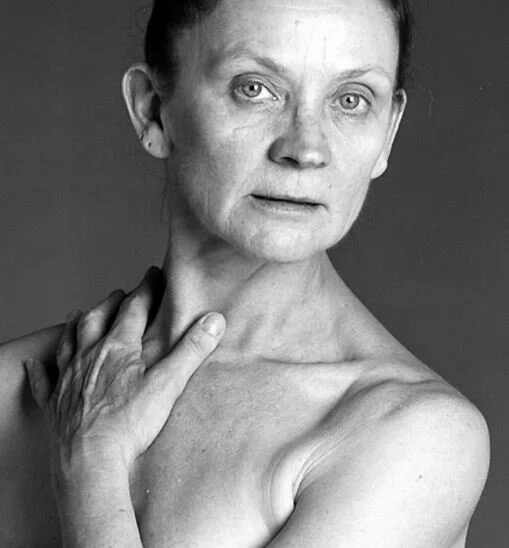Barbara Bourget reflects on a life and career devoted to communicating with others through dance
The dancer, choreographer, and artistic director of Kokoro Dance has performed and created hundreds of pieces
Barbara Bourget in A Simple Way. Photo by Yukiko Onley
In 1997, a local newspaper asked Barbara Bourget, dancer, choreographer, and artistic director of Kokoro Dance, if she’d still be making dance 10 years on.
Decades have passed and yes, she is still making dance.
Barbara Bourget (second from left) with EDAM. Photo by Chris Randle.
A Vancouver icon, Bourget started dancing at the age of four and studied ballet throughout her school years. She went on to train extensively in both ballet and modern dance, performing with the Royal Winnipeg Ballet, Les Grands Ballets Canadians, and several modern dance troupes, including the EDAM (Experimental Dance and Music) dance collective.
She was still working as a dancer and choreographer when she started her career as a producer in 1983 before forming Kokoro Dance three years later with Jay Hirabayashi. No matter what kind of work she was doing her goal was always the same.
“What I try to do is communicate what I want to say through my art form which is dance,” she said at the time. “I hope that people will get something out of it.”
From 1986 on, Bourget focused her attention on butoh studies with several masters of the form. Being mesmerized with butoh, she has performed and choreographed hundreds of pieces.
When she performed her solo work, A Simple Way, in her early 60s in 2012, she reflected on butoh in relation to aging.
“In the world of dance, butoh is unique for its older and even elderly dance artists, which is the polar opposite of western forms of dance based on youthful athleticism,” she said. “Rather than hiding the way age changes the body, butoh lays it bare for all to see. In North American culture, age isn’t so revered. ‘Now’s the time,’ I thought, ‘for me to start working on something like this.’”
Barbara Bourget in Moan in 1998 at the San Francisco Butoh Festival.
Every single piece she has performed held meaning to her, but there were a few, like A Simple Way, that she could relate to herself more personally.
“The piece is really about my life in art, my exploration of this art form I love so much, that I have dedicated my life to,” she said at the time. “When you’re a performing artist, what you do only exists in the moment that you share the experience. Every time you have a great success, great failure, it doesn’t matter. Every time you go back to the beginning and start again. There is a deep sadness in that, but also great joy. I think it really is about looking back but moving forward.”
Tabula Rasa for AURA Dance Theatre of Lithuania. Photo by Peter Eastwood
When Barbara Bourget’s sister, Linda McCrae, died in 2006, Bourget threw herself into her work.
McCrae was paralyzed from the mid-chest down following a car accident when she was 24 years old. However, she went to law school and practised law for five years before her health began to deteriorate. “She neither accepted what had happened nor let it interfere with her goals in life”, Bourget said. “She was an inspiration for me.”
Bourget created new choreography about her sister’s life and death called Tabula Rasa, meaning “clean slate”, for senior students at Simon Fraser University in 2006. It was re-created for Aura Dance Theatre in 2007 and presented by Kokoro Dance performers at the Vancouver International Dance Festival in 2009.
Tabula Rasa was the title of a CD—a double concerto for two violins and prepared piano—by Estonian composer Arvo Part. The music, which has been described as “so spiritual that it manages to enter directly into the soul”, was exactly what Bourget was looking for in creating a work about her sister.
“For me, that’s what appeals to me about the music: a clean slate that’s trying to express my own sadness but also to celebrate and to begin and take her with me on my own journey,” Bourget said. “I know that she’s now with me and will always be with me.”.
Barbara Bourget has dedicated her life and career to expressing herself through dance. Photo by Yukiko Onley
Bourget has expressed what’s inside her and communicated with others through dance for most of her life. Today, she is being “current”.
She is still recovering from knee surgery but expects to be part of the annual Wreck Beach Butoh workshop performances next month and a new piece, a duet for her and Hirabayashi, scheduled for this coming September.
“[Jay and I] are still grappling with a title but we are very excited to continue our very fruitful collaboration over the last 42 years, on many levels!”
Will she be still dancing in about 10 years? The answer is probably a resounding yes.
This post was sponsored by Kokoro Dance.






